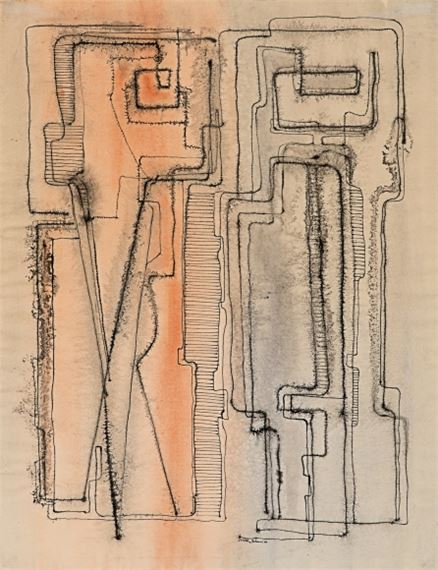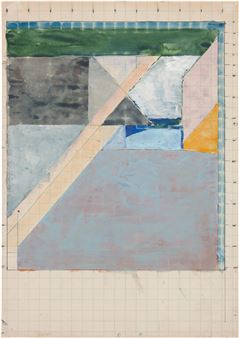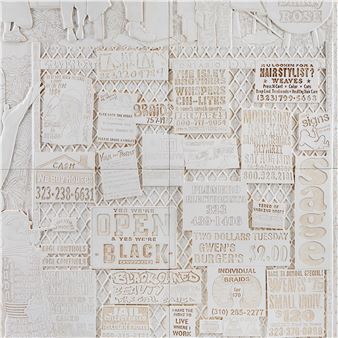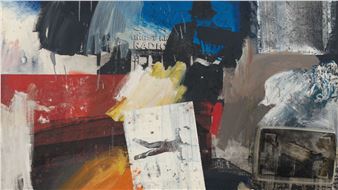Unconventional Figures
Rosenberg & Co. is pleased to present Unconventional Figures, an exhibition highlighting the diverse and nuanced approaches that twentieth-century artists took in depicting the human form. Representing the figure has been a foundational practice for Western artists throughout history. The traditional hierarchy of artistic genres, established in sixteenth century Italy and promoted by French academies through the nineteenth century, prioritized art forms that depicted the figure in imaginative and skilled ways. For many, access to figure drawing classes or models was a pathway to professionalism and success. At the end of the nineteenth century, as artists worked to challenge and dissolve those traditional hierarchies, the figure took on new and exciting forms; in print, on canvas, and in sculpture, the body was modernized, abstracted, and fragmented.
From simplified shapes to fully nonrepresentational forms, Unconventional Figures explores the many ways in which artists depicted the figure amidst the newfound dynamism of the twentieth century. Works by Aristide Maillol and Joaquín Torres-Garcia pay homage to ancient, idealized bodies and also emphasize a sense of the monumental that was particular to contemporary sculpture. Other works, such as Personnage debout by Georges Valmier or Femme bizarre by Julio González, are fully abstract and transform familiar bodily elements into fragmented planes.
Artists working across continents, such as Louis Ribak and Béla Kádár, envisioned the female nude—one of the most recognizable and time-honored subjects—in their works, but transplanted her into new, decorative settings that disguised the distinction between subject and background. Others, like Peter Kinley—working 30 years later—utilized planes of color to abstract the figure within the composition. The photographs of Fred Stein and the sculptures and drawings of Giacomo Manzù are both case studies in how an artist transforms notions of the body over a lifetime of work dedicated to it. From the beginning to the end of the century, artists removed the body from the constraints of classical depiction, and the subject became an ample site for artists to experiment with style, medium, movement, and scale.

Recommended for you
Rosenberg & Co. is pleased to present Unconventional Figures, an exhibition highlighting the diverse and nuanced approaches that twentieth-century artists took in depicting the human form. Representing the figure has been a foundational practice for Western artists throughout history. The traditional hierarchy of artistic genres, established in sixteenth century Italy and promoted by French academies through the nineteenth century, prioritized art forms that depicted the figure in imaginative and skilled ways. For many, access to figure drawing classes or models was a pathway to professionalism and success. At the end of the nineteenth century, as artists worked to challenge and dissolve those traditional hierarchies, the figure took on new and exciting forms; in print, on canvas, and in sculpture, the body was modernized, abstracted, and fragmented.
From simplified shapes to fully nonrepresentational forms, Unconventional Figures explores the many ways in which artists depicted the figure amidst the newfound dynamism of the twentieth century. Works by Aristide Maillol and Joaquín Torres-Garcia pay homage to ancient, idealized bodies and also emphasize a sense of the monumental that was particular to contemporary sculpture. Other works, such as Personnage debout by Georges Valmier or Femme bizarre by Julio González, are fully abstract and transform familiar bodily elements into fragmented planes.
Artists working across continents, such as Louis Ribak and Béla Kádár, envisioned the female nude—one of the most recognizable and time-honored subjects—in their works, but transplanted her into new, decorative settings that disguised the distinction between subject and background. Others, like Peter Kinley—working 30 years later—utilized planes of color to abstract the figure within the composition. The photographs of Fred Stein and the sculptures and drawings of Giacomo Manzù are both case studies in how an artist transforms notions of the body over a lifetime of work dedicated to it. From the beginning to the end of the century, artists removed the body from the constraints of classical depiction, and the subject became an ample site for artists to experiment with style, medium, movement, and scale.
Contact details


 ARTISTS
ARTISTS















